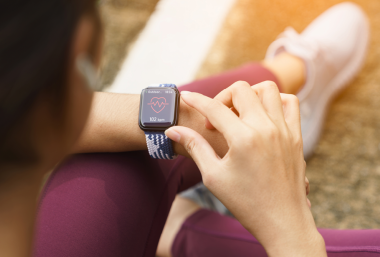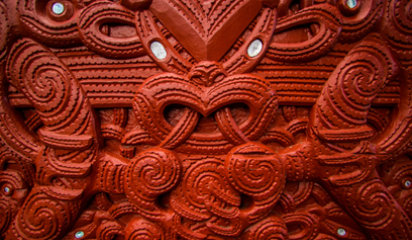Since their release in 2015, Apple’s smartwatches have revolutionised smartwatch technology. With basic time-keeping capabilities alongside fitness tracking, health-orientated applications, wireless telecommunications, and the ability to interact with other watchOS and Apple products and services, Apple’s smartwatches quickly became the top-selling wearable device. In September 2020, Apple released the Apple Watch Series 6, its first watch to incorporate a light-based pulse oximetry sensor to monitor blood oxygen saturation.
Apple’s pulse oximetry sensor, and the related blood oxygen application, has since been incorporated into Apple’s Watch Series 9 and Watch Ultra 2, and purports to allow users to measure the oxygen level of their blood on demand and directly from their wrist.
However, Apple’s introduction of pulse oximetry sensing did not go down well with Masimo, a global specialist in non-invasive patient monitoring technologies and medical devices. These include the Masimo W1® Medical Watch, the first smartwatch approved as a medical device by the United States FDA. This device is said to provide "patients with real-time pulse oximetry” enabling them to "track valuable parameters such as SpO2, pulse rate, and heart rate, encouraging them to take a more active role in their own health".[1] Crucially, Masimo has also obtained US patent protection for its pulse oximetry technology.
In June 2021, Masimo filed a lawsuit with the United States International Trade Commission (USITC), claiming that Apple Watches that use a light-based pulse oximetry sensor infringe five of its pulse oximeter patents. It asked the USITC to halt all imports of the Apple Watch Series 6. In January this year, a US judge held that Apple was infringing two claims of US Patent No. 10,945,648. Move forward to December 2023, and the USITC has now implemented an import ban on all Apple smartwatches incorporating the light-based pulse oximetry functionality and capabilities.
Apple has appealed to President Biden to veto the USITC ruling. Nevertheless, it has undertaken to pause all sales of its smartwatches online in the United States starting Thursday 21 December 2023, and at retail locations throughout the United States from Christmas Eve.
What about New Zealand?
Masimo did not obtain a New Zealand equivalent to US Patent No. 10,945,648, so it is unable to take similar infringement action against Apple here. In the absence of traditional IP protection, developers of innovative technology in regulated industries such as medical devices can use the need for regulatory compliance to disrupt competitor’s activity. In this case, the incorporation in Apple smartwatches of a light-based pulse oximetry sensor raises the question: could these Apple smartwatches be considered a "medical device" requiring compliance with the Medicines Act 1981 and related regulations?
Unlike in the United States, medical devices in New Zealand do not require specific clearance or approval before being sold for medical purposes. The Medicines Act simply requires notification of a "medical device" by addition of relevant information into a database. There is no public access to this database, but it is unlikely that the Apple Watches are listed in the database. Apple states on both its support website and in the fine print on its main website that any "measurements taken with the Blood Oxygen application are not intended for medical use and are only designed for general fitness and wellness purposes".
This language appears intended to keep Apple Watches outside the definition of "medical device" in the Medicines Act. That definition, includes that to be a "medical device", the product must have "a therapeutic purpose." This means a purpose of "preventing, diagnosing, monitoring, alleviating, treating, curing, or compensating for, a disease, ailment, defect, or injury…".
Should any regulatory complaint be made, the issue would be whether Apple’s smartwatches have a "therapeutic purpose" despite the disclaimers by Apple.
As a further complication, the Medicines Act 1981 was meant to be repealed and replaced by the recently passed Therapeutic Products Act 2023. This Act would have changed how medical devices are regulated in New Zealand. In particular, the definition of "therapeutic purpose" was broadened to include "maintaining or promoting human health". Arguably, the ability to measure the oxygen level of your blood provides a smartwatch wearer with a means of indirectly maintaining and/or promoting their health. However, on 24 November 2023, the new three-party government announced that it intended to repeal the Therapeutic Products Act. Consistent with this intention, the Ministry of Health website currently states on its website that the Therapeutic Products Act 2023 will be repealed, meaning that the Medicines Act 1981 will remain in force.
Given the convergence of wearable "wellness" technology with medical devices, the current loose regulation of medical devices in New Zealand may be unfit for purpose. Are self-serving, fine-print statements that technologies such as pulse oximetry sensing are for "general fitness and wellness purposes" sufficient to protect consumers? Misleading claims or inaccurate technology remain subject to the Fair Trading Act, but should consumers not be protected from such problems without needing to make a complaint after a purchase?
In the meantime, manufacturers, importers, and distributors of any wellness-related technology should take care to either notify their products as medical devices and comply with the Medicines Act regime, or be sure to avoid claiming any therapeutic purpose for those products. A close eye should be kept on any further legislative developments. AJ Park’s team of experts can assist with any of these issues.
[1] https://www.masimo.com/products/monitors/masimo-w1-medical-watch/








